Dear Artist,
While browsing calls to entry recently, I came across an exhibition aimed at artists over 60. The gallery’s mission, said the call, was “to create a dialogue with the arts community supporting our belief that older, lesser-known artists must not be overlooked due to age or decreased marketability in the current art scene.” The gallery is the project of the Carter Burden Network — a New York non-profit which advocates for the efforts of older people. The gallery, as part of this mission, has classified these artists as, “re-emerging.”
The terms “emerging,” “mid-career” and “established” have long functioned to gather professional artists into loose categories for the purpose of helping collectors determine their investability. They’re art world labels — a little like identifying a stock as a penny or a blue-chip — and are mostly just troublesome for the artists themselves. “If I’ve been plodding for 30 years with only a modicum of heat, can I still be considered “emerging” for the sake of my future potential?” asks an artist in his 50s — or 80s. Meanwhile, a pimple-faced has-been scrambling to prop inflated auction results no longer enjoys the freshness of the term. This dehumanizing taxonomy is meant to follow an artist’s market value rather than her age, though the art world is hardly exempt from the greater world’s obsession with juvenilia. How long does one really get to stay “emerging,” as opposed to, say, “somewhat permanently undiscovered?” Art professionals struggle to agree but the answer could be found in the amount of time a blushy starlet gets invited to play the ingenue. By a totally different set of values, what professional achievement, exactly, signals “established?” Does it involve what my Dad called, “the dirt nap?”
While we can all agree that labels are for suckers, we may also acquiesce to their usefulness, when suits. When Yayoi Kusama turned 90 in 2019, she was among the most skyrocketed artists alive. Her beginnings in Nagano Prefecture, Japan were perhaps like a lot of other arty dreamers seeking fame and fortune: she escaped a stifling upbringing, toiled against systemic exclusion and cultural conservatism, attended art school, gate-crashed the pillars of the establishment and moved to New York in time for her 30th birthday. She also suffered from hallucinations and mental illness, which she channelled into a personal, future-forward painting practice; plus sculpture, performance, environments and films. Kusama stirred the pot with a thirst for publicity and recognition, and garnered a respectable amount of attention until the dominant movements of 1960s New York shifted away from her antics and psychedelics to a more conceptual, and often distinctly American aesthetic. Kusama returned to Japan and drifted out of the scene. By the late 1970s, she was voluntarily living in a psychiatric hospital.
In 1989, 32 year-old curator Alexandra Munroe flew to Japan and retrieved Kusama’s archive in preparation for a retrospective at New York’s Center for International Contemporary Arts. “The time,” Munroe later wrote, “was right for a rigorous reappraisal of modern Euro-centric and gender-biased art history that integrated Kusama’s work into a more expansive view of postwar and contemporary culture.” Kusama, or at least her star, had re-emerged; she was 60. Four years later the New York Times, when reviewing her solo retrospective for the Venice Biennale’s Japanese Pavilion, called her comeback “a resurrection.”
Sincerely,
Sara
PS: “Our Earth is only one polka dot among millions of others… We must lose ourselves in the ever-advancing stream of eternity!” (Yayoi Kusama)
Esoterica: “Carter Burden Gallery targets NYC artists over the age of 60, fostering a supportive and culturally-diverse community of re-emerging artists. We celebrate this community’s unique ability to share lifetimes participating as vital members of New York’s arts culture, and work to create opportunities for networking and responding to each other’s work, thereby invigorating the creative process. In recognizing this community, we confirm their continued value and contribution to the arts.” So reads the mission statement of Carter Burden Gallery in Chelsea, New York. If you’re 60-plus, you can reply to their latest call to entry, here.
“Professional artists never stop doing what we do, and in many cases we get better at it as we go along.” (Marlena Vaccaro, Director of Carter Burden Gallery, NYC)
Have you considered a Premium Artist Listing? With each letter, an artist is featured at the bottom of this page. The Premium Artist Listings are a means of connecting artist subscribers through their work. Proceeds from each listing contribute to the production of The Painter’s Keys.
“Long ago, I decided that all I could do was express my thoughts through my art and that I would continue to do this until I died, even if no one was ever to see my work. Today, I never forget that my artworks have moved millions of people all around the world.” (Yayoi Kusama)
Featured Workshop
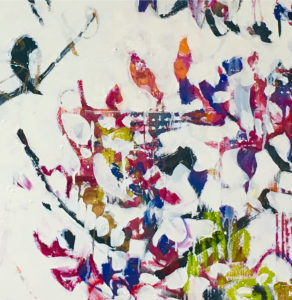 Join Ellie Harold for “Intuitive Painting: Permission to Paint Expressively,” designed especially for mature women artists of all skill levels who wish to explore this medium for soulful exploration. The retreat provides attractive accommodations (your own room!) along with lightly structured activities for centering, relaxation and low stress art-making. You’ll have plenty of free time to muse, paint, write and reflect while enjoying the colors, textures and flavors of San Miguel. This Retreat has the potential to transform not only your art but your life! You’ll return home with a specific art “care plan” to assure support for further creating. Details at www.EllieHarold.com.
Join Ellie Harold for “Intuitive Painting: Permission to Paint Expressively,” designed especially for mature women artists of all skill levels who wish to explore this medium for soulful exploration. The retreat provides attractive accommodations (your own room!) along with lightly structured activities for centering, relaxation and low stress art-making. You’ll have plenty of free time to muse, paint, write and reflect while enjoying the colors, textures and flavors of San Miguel. This Retreat has the potential to transform not only your art but your life! You’ll return home with a specific art “care plan” to assure support for further creating. Details at www.EllieHarold.com.
Featured Artist
Gardens are my enduring inspiration, and getting to the heart of the flower, my passion.


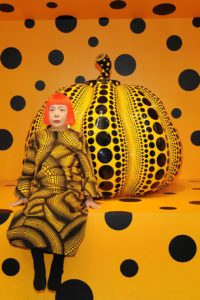
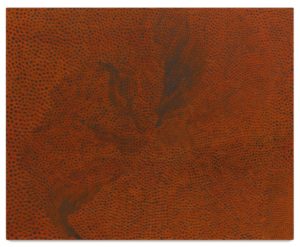

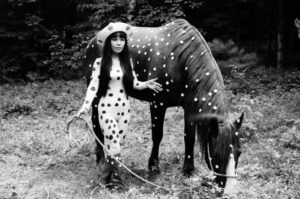
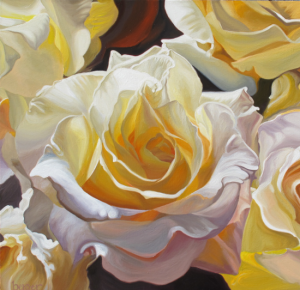



16 Comments
Though I work hard to represent my work and that of the other artists that show alongside me in both my physical and online gallery (and the success of doing so is important to be able to keep a fully loaded brush to canvas), this idea of deciding what is what by classification just doesn’t seem very useful as an artist, a gallery owner or an art collector. Since I am all three (and slightly over 60) it seems wise to acknowledge that these notions might be useful to some and move on because, whatever is decided, it is temporary, usually shortsighted and will never improve the quality or meaningfulness of any artwork. It just isn’t particularly useful information no matter how curiously intriguing it might be in the moment. Context is so important in this discussion that it becomes quirky and one must have a sense of humour to appreciate it. Fore example, when someone introduces me as “the famous painter Terrill Welch” or ask if they can have their picture taken with me for their Instagram feed, I work really hard in the first sense not to dissuade them of such a silly notion and to stand still with a smile on my face in front of my work with a stranger for the second. I have come to realize that for these individuals I am famous and it is noteworthy to have a photo with me, no matter how embarrassing this to me. I can confidently say, without hesitation, that most of you reading this are likely completely unfamiliar with my paintings and would never say I was famous to a friend or family member or be wanting to snuggle up for a photo-op in front of one of my larger paintings. I also know that most prominent art dealers and curators in New York City might just be smirking with a twinkle in their eye about now or have that raised eyebrow of dismissiveness fully expressed. However, would more mainstream-centre-of-the-arts observations diminish the experience of the people who are convinced of their own understanding of the importance of the work I do and their enjoyment of it? I am thinking not from the excitement and smiles on their faces. Therefore, I can happily leave the labeling of my work to others and get back to painting and sharing art with those who love it and find the work meaningful – to them!
Well said, Terrill! I have never had the pleasure of being called “a famous artist” although another very accomplished abstract artist I know once told me “oh that means a lot coming from a real artist like you” when I complimented her on a painting of hers! I felt really chuffed, I recall. I think the really salient issue is whether when one shows one’s work, whether in one’s tiny little patch, or on the worldwide stage, that it “talks”!
Thanks Kriss! I like how you think “the really silent issue is whether when one shows one’s work, whether in one’s tiny little patch, or on the worldwide stage, that it ‘talks’!” This is definitely worth a full stop and repeating. All the best to you as always!
I wish there was such a gallery in Canada. For the longest time it was a challenge to be taken seriously as an artist if you were female. Some say it still is. If you are also over 40, and not LGTBQ or BIPOC it becomes almost impossible to find venues to show your art now. Rebalancing to address past inequities is certainly necessary. But age? Who decided that young artists are more deserving of support or attention? The fixation on supporting young artists ignores some marvelous work being done by older people, many of whom did not start until they were in their forties or even fifties.
And that makes them young artists!!
I think that categorizing artists by age or any kind of status is missing the point of the artwork itself. I’ve been “working” my skill set for nearly 50 years. It only improves with age. It’s the work. Not the age or status that should be the point.
Young or old, if there is originality, refinement and connects to the viewer, who cares how old the artist is? I don’t think when someone connects to a particular piece of artwork the person connecting asks themselves “How old is this artist, or are they the popular category of the day.” They only know how that piece makes them emote. Art should transcend those other pesky issues. I don’t waste much time worrying about those things when I dive in for the day.
Amen Michele!
Until after the age of 62, art as a sideline until a decades-long career in journalism ended in the 2008-2009 recession. Since painting and drawing from childhood, I began to explore beyond oils and pastels, and fell in love with collage (thanks to Gerald Bromer), watercolor (Roland Lee, Claudia Nice, and so many more) and gilding from the small illuminated lettering in calligraphy. I haven’t looked back and live with more energy, more joy, and more openness to the future than ever. Living in the southwest, I seek people all over the world and am having success despite the pandemic and growing experience. Maybe this is crazy, but I love Terrell and her artists, as much as I enjoy those doing work in the western states. Painting every day and rejoicing.
Thanks Mary! Painting every day and rejoicing sounds good to me!
Lol at “somewhat permanently undiscovered.” :)
I’m 72, I do not fit into the digital world. When I was 30 it all seemed to fall into place with little effort. I talked to galleries directly, they never complained. I entered national shows,won awards, everything seemed to work. In 2018 I won an award in the “Rocky Mountain National Watermedia Show”,in 2015 I had two paintings in “Acrylic Works 2”, North Light Books, in 2016 I had two paintings in “Acrylic Works 3”, I’ve won awards in state shows but I can’t get galleries to respond when I apply digitally.
No matter when we begin to paint (aka emerge), we keep doing it. Emily Carr enjoyed her best acknowledgements on her paintings in sales and attention well into her 60s. I often wonder if I will end up in “the book” when someone takes one of my paintings to an appraiser in 2050. Or, will I just be an artist that was somewhat permanently undiscovered (haha love that), but appraiser guy says… heck, it’s original, and not a bad painting, I’d say worth a few hundred bucks. I wonder too, should I be more focused on self promotion than getting at my easel and just painting, the latter works best for me.
We as Artist are gifted and is from God, to use it and maximizing it is a great opportunity. In this modern technology we can post our work and share the world. Don’t wait until you are 70 or 80 . My encouragement is keep creating because it is in you. Wish you the best !
SELF EXPRESSION AVOIDS DEPRESSION! Make art wherever and others respond. It’s in how you see. Recently in Mexico l fotografed fabrics in various compositional arrangements with my telefon. I edited framed and hung them in. an Art Cafe. The Show received much respond and admiration. Altho l had lost my studio, teaching post, and “professional reputation”.
I agree with Denise 100%. We are probably close in age and the earned wisdom and experience that comes with it allows me to brush off a lot of meaningless categories. The work is the thing.
While Geometry Dash Lite lacks the full game’s levels and editing features, it nevertheless provides intense rhythm-based action and is an excellent starting point for new players.